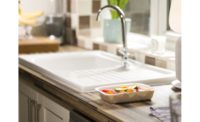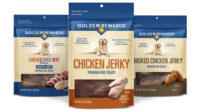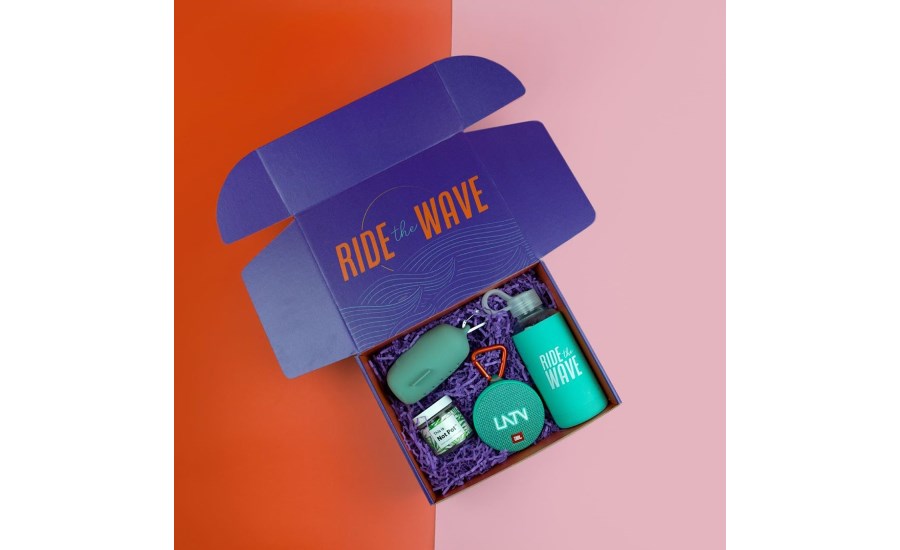How to Choose the Right Packaging for Your Business

Brand vision needs to be outlined from the outset to have a smooth process. All photos courtesy of Packlane

Nailing down your key messaging will keep your team and your designer on track. All photos courtesy of Packlane

Printing on both sides of the box allows brands to use the inside of the box to display a custom “thank you” message. All photos courtesy of Packlane

Little extra details included in the packaging can be just as important as the product itself. All photos courtesy of Packlane

SpiroPack void fill can be used for protection and too add a fun surprise. All photos courtesy of Packlane





As a small- or medium-sized business it can be challenging to stand out amongst all the noise in today’s e-comm world. When dealing with product sourcing, marketing, website function and more, sometimes the details of packaging may fall to the wayside.
At Packlane, a one-stop shop for creating custom, branded packages for businesses of all shapes and sizes, we have compiled some great tips for businesses to make sure packaging stays top of mind as these processes are crucial.
To provide some context, 72% of consumers consider packaging a vital part of their buying decision, which is why packaging is no longer a vehicle for your product but another marketing avenue to connect with your customers. In addition, 49% of shoppers are willing to spend more if the packaging is well done.
Below is a step-by-step guide for small businesses to navigate the packaging world to ultimately stand out amongst the noise.
Step One: Professional Packaging Design
Whether you plan on designing your product packaging yourself or outsourcing to a design team, there are a few steps you need to take before printing.
First, you need to outline your brand, from the colors, fonts and assets — the more you have outlined for creative direction, the better. Once you have a clear outline in a document or file for your team (or your designer), the smoother the project will go. Make sure your team references the brand guidelines often throughout the project because doing so ensures the end result matches your brand and vision.
From there, you have to decide what type of packaging you should use. This definitely depends on the product, but the most traditional options are shipping boxes, mailer boxes, rigid mailers or flexible packaging.
The next step is measuring your product and all the extras you plan to include inside the package. This gives you a better idea of packaging dimensions, so you or your designer know how much room you have to work with.
If you need help deciding which size package is right for your products, check out Packlane’s How To Measure page. This resource helps to arm you with everything you need to know. There’s even a user-friendly box size calculator to make the process as easy as possible.
Last, you need to understand the messaging you want to portray with your packaging to your customers. Nailing down your key messaging will keep your team and your designer on track.
When that’s done, you can move on to the actual process of designing your product packaging.
Option 1: The “Design It Yourself” Practice
The DIY method is great for brands with a solid in-house design team and strong sense of brand identity.
DIY is obviously much more affordable than hiring a designer, but it can be very time consuming and cost more hours in the long run — especially if the designs don’t come out as expected. However, you can always try doing it yourself first, and if you're unhappy with your DIY final product or run out of time you can then outsource it to a professional packaging designer.
To make the process as seamless as possible, Packlane developed a custom 3D proofing tool you can use to design your product packaging.
As a reminder, don’t forget to refer to your branding guidelines and key messaging to make sure you’re staying on-brand with your design.
Pro-tip: You can print on both sides of the box to maximize the amount of space you have. You can also use the inside of the box to display a custom “thank you” message, encourage social sharing or share more about your product and brand.
Whenever you’re ready, enter the quantity you’d like to order (Packlane’s minimum is one) and finish the checkout process.
Note: it’s crucial to think about dielines while you’re designing. There’s an option to request dielines or upload your own within our design tool. With that said, we highly recommend hiring a designer that understands how they work if you’re unfamiliar with dielines.
Option 2: The “Outsource to the Pros” Practice
If your budget allows or you don’t have the resources to complete the project yourself, hiring a professional packaging designer is a great option to make sure you get exactly what you’re looking for. Make sure to share your branding guidelines, package measurements and your overall key messaging for your designer to kick off the process.
A few recommendations from Packalne to hire a designer are below:
- 99designs: A marketplace full of qualified packaging designers
- Dox.Design: Our favorite world-class creative design studio
- Looka Design: An AI-powered logo and branding generator
Step Two: A Powerful & Insta-Worthy Unboxing Experience
Now that you have the outside of the packaging designed and complete, it’s time to start thinking about creating an unforgettable unboxing experience. From your products’ presentation to the little extra details you include, it’s just as important as the product itself these days.
According to BigCommerce, it’s no longer a differentiator: It’s a must-have.
Not only does it help increase the perceived value of your brand, encourage social media shares and enhance brand loyalty, it also helps tell your story. It shows that you’ve thought about the experience and pay attention to the finer details. But the most important part is that it shows you care.
There are a handful of ways you can go above and beyond to create a world-class unboxing experience without breaking the bank. From offering free samples and gifts to a simple handwritten “thank you” note, these small details go a long way with customers.
You can also consider adding things like:
- Custom tape instead of opting for clear or plain brown
- Stock or custom tissue paper to add a refined element to the box
- Branded stickers customers can use however they want
- SpiroPack void fill for protection and a fun surprise
- Packaging sleeves for extra brand recognition
- Custom packaging inserts to up-level the presentation
Packlane is in the business of helping people do business better. As such, we designed our 3D proofing tool and packaging options to help you kickstart the process of creating the packaging your products (and customers) deserve.
For more expert tips on packaging, visit packlane.com.
Originally published on Packlane.com
Looking for a reprint of this article?
From high-res PDFs to custom plaques, order your copy today!











